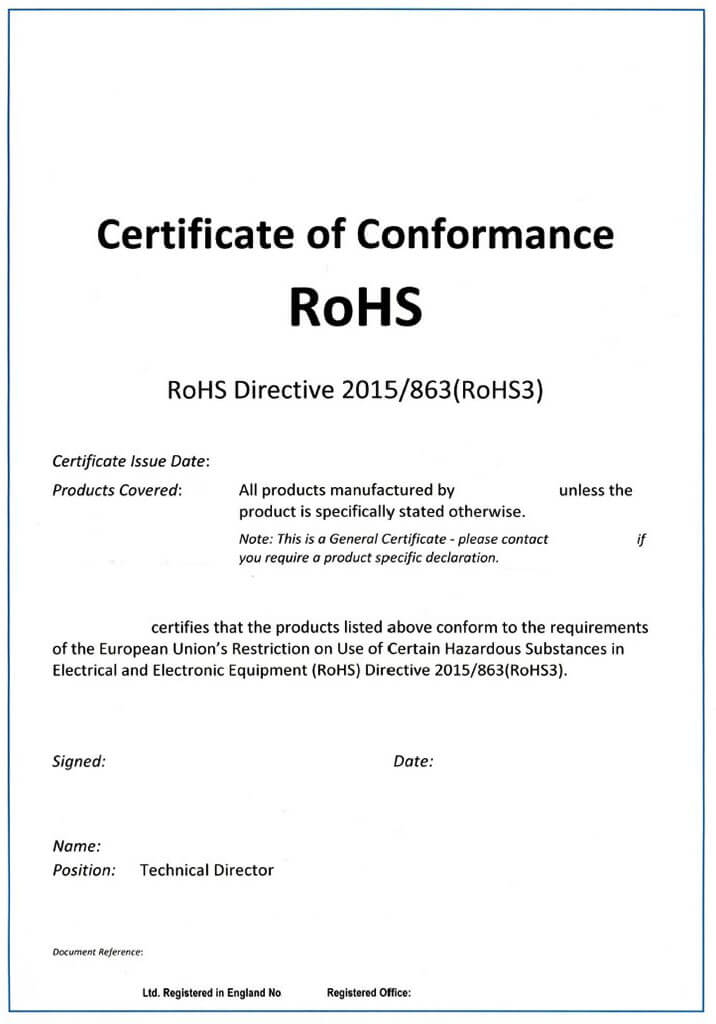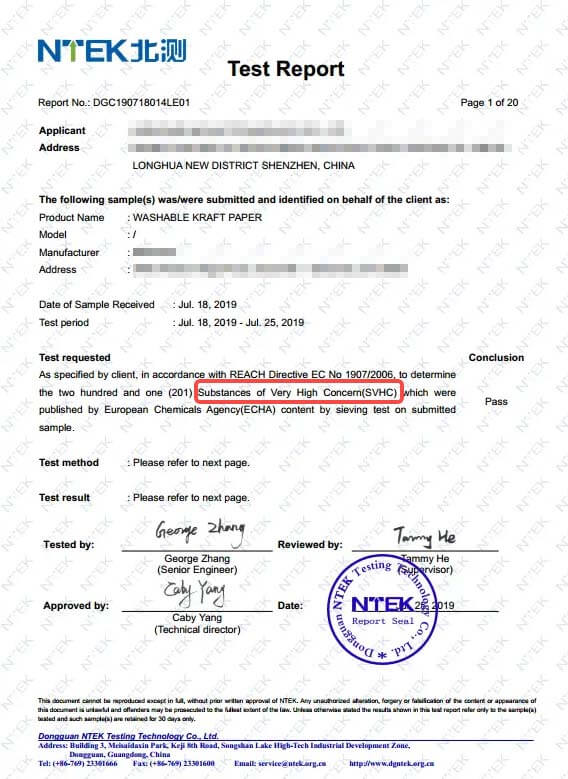When you import products like electric and electronic products into the EU, it is important to consider both REACH and RoHS, two common product certifications. Many people always mix them up and make mistakes. So in this article, I’ll tell you about REACH and RoHS compliance and the key difference between RoHS and REACH.
What is RoHS?
RoHS stands for Restriction of Hazardous Substances in Electrical and Electronic Equipment. It is the EU directive that restricts 10 harmful substances content in Electrical and Electronic Equipment (EEE). RoHS aims to reduce the impact of EEE products on the environment and human health.
And it is a mandatory certification in the EU for EEE products. If you don’t have RoHS compliance, your product will get required to withdraw from the EU market and face massive fines, even imprisonment.
What is REACH?
REACH stands for Registration, Evaluation, Authorization, and Restriction of Chemicals.
Registration
If the products you import into the EU contain chemical components that get listed in substances of very high concern (SVHC), registration is in need when it meets fully the following conditions:
- The annual usage of the substance exceeds 1 ton.
- The substance content in the product is more than 0.1%.
- The substance doesn’t get registered for this use.
If without REACH registration, your products will get banned from selling in the EU. The types in need of registration include chemical substances themselves, and chemical mixtures such as toothpaste, shoe polish, etc. And it also includes products that intentionally release chemical substances for additional functions such as scented erasers. The registrant should be the manufacturer or importer in the EU.
Documents for registration should include information about hazardous substances, the risks when using them, and how to control and deal with these risks. In addition, if the annual production or import volume of chemical substances exceeds 10 tons, you also need to submit a chemical safety report.
If your product only meets the condition that the SVHC substance content exceeds 0.1%, you do not need to register. You just label the substances that exceed the standard and their impacts as required in a conspicuous place on the product packaging. And then prepare relevant documents such as MSDS reports to ensure that the product is safe to use. In this way, you could still sell your products in the EU.
Evaluation
Evaluation includes dossier evaluation and substance evaluation.
For dossier evaluation, the European Chemicals Agency (ECHA) will at least evaluate 5% of the dossier that gets submitted for registration. It aims to ensure the completeness and accuracy of information. If it is not complete, ECHA will inform the register of what other is in need.
For substance evaluation, its purpose is to identify the risks of chemical substances to human health and the environment.
Authorization
After the evaluation gets completed, the next step is authorization. Since all substances that get authorized are from the SVHC substance list, people also call the SVHC list as the candidate list of those substances.
If a substance gets recommended for authorization, a comment period will ensue, which lasts for 90 days.
Restriction of chemicals
The restriction is another means under REACH that allows the European Commission to control the use of dangerous chemical substances circulated within the EU market. It regulates some chemicals that may completely get banned, or some uses of the chemicals can get restricted under a certain standard.
REACH is a regulation for the preventive management of chemicals, which ensures the chemicals safely enter the EU market, and shows the risks and corresponding management measures to people for safe use. It aims to reduce the risks of chemicals for humans and the environment throughout the whole product life cycle.
For applicable substances, if there is no registration and compliance report, you may face product recall, fine, or criminal liability.
Difference between RoHS and REACH
Applicable products
The goods RoHS tests are all electric and electronic products into the EU market.
REACH regulates the use of harmful and toxic substances in products. So REACH covers a very wide range of goods. Except for food and pharmaceuticals, almost every product gets included, such as electric products, individual chemicals, and daily consumer goods that get manufactured, imported, or sold within the EU.
Restricted substances
RoHS needs to test 10 substances, such as Pb, Hg, DIBP, etc. Except for Cd, which is a maximum of 0.01%, the proportion of other substances shall not exceed 0.1%.
Compared to RoHS, REACH tests a larger scope of substances. It mainly tests if the product involves SVHC, which shows carcinogenic, mutagenic, toxic for reproduction, or bioaccumulative, and if the SVHC content meets the REACH standard (0.1%). If it exceeds, you may need to register the substance.
Now on the SVHC list, there are more than 200 substances, including metals and chemicals. In addition, the SVHC list gets updated every 6 months. So you need to follow the latest news and update the test report if you import products into the EU.
Testing methods
RoHS always directly conducts a chemical analysis of the same material and does not accept mixed testing for multiple materials.
In REACH testing, because the SVHC list covers lots of substances, it will cost a lot if all substances get tested individually. The generally accepted method on the market is that for products with a lot of materials, such as TV sets, multiple materials can get grouped and mixed for testing.
Documents for compliance
In RoHS testing, if your products meet the standard, the inspection company you choose will issue a RoHS compliance certificate.
In REACH testing, it will issue an SVHC testing report which you need to perform the relevant obligations, and a declaration of conformity if the test results comply with the REACH standard.
Here are the compliance certificates of RoHS and REACH for your reference.
Click to Enlarge
In the EU, RoHS and REACH are both mandatory. REACH aims for substances, and RoHS aims for products. These two don’t affect each other.
Please note that if you import electric and electronic products, the above documents are both in need. If overlapping requirements arise, you should apply stricter requirements such as minimum allowable concentrations. During the regular review of the RoHS Directive, the EU Environment Agency will also analyze its consistency with REACH regulations to ensure uniformity between them.
As a leading sourcing company, JingSourcing has helped 4000+ importers to source products from China. Many of them are from the EU. We are experienced in dealing with EU orders. And we can also help you arrange shipments and different documents such as RoHS certificates and SVHC testing reports.




Leave A Comment